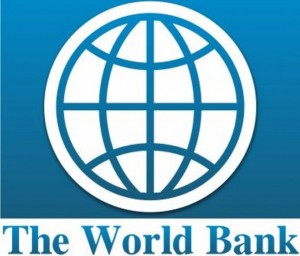Sub-Saharan African growth slows down – World Bank
 The World Bank’s 2016 global growth forecast indicates that growth in Sub-Saharan Africa has slowed again in 2016 to 2.5 per cent, down from an estimated 3.0 per cent in 2015.
The World Bank’s 2016 global growth forecast indicates that growth in Sub-Saharan Africa has slowed again in 2016 to 2.5 per cent, down from an estimated 3.0 per cent in 2015.
According to the latest update of its Global Economic Prospects Report made available to the Ghana News Agency in Accra the WB explained that as commodity prices are expected to remain low, global activity is anticipated to be weak, and financial conditions are tightening.
The WB noted that oil exporters are not likely to experience any significant pickup in consumption growth, while lower inflation in oil importers should support consumer spending.
However, food price inflation due to drought, high unemployment, and the effect of currency depreciation could offset some of this advantage. Investment growth is expected to slow in many countries as governments and investors cut or delay capital expenditures in a context of fiscal consolidation.
The report said East Asia and the Pacific region growth was projected to slow to an unrevised 6.3 per cent rate in 2016, with China’s expansion expected to ease to 6.7 per cent, as projected in January.
The region, excluding China, is projected to growth at 4.8 percent in 2016, unchanged from 2015. This outlook assumes an orderly growth slowdown in China accompanied by steady progress on structural reforms and appropriate policy stimulus as needed.
Growth in the rest of the region is expected to be supported by rising investment in several large economies (Indonesia, Malaysia, Thailand), and strong consumption supported by low commodity prices (Thailand, the Philippines, Vietnam).
According to the report, the continuing contraction in Russia is keeping the forecast growth rate of Europe and Central Asia at 1.2 percent in 2016, a 0.4 percentage point downward revision from the January outlook.
The report said geopolitical concerns including flare-ups of violence in eastern Ukraine and the Caucasus and terror attacks in Turkey weighed on the outlook. Excluding Russia, the region is expected to expand at a 2.9 per cent rate.
Growth projections for the eastern part of the region have been revised down from the January outlook as countries adjust to lower prices for oil, metals, and agricultural commodities.
Activities in the western part of the region will benefit from moderate growth in the Euro Area with strengthening domestic demand helped by subdued fuel costs.
The report said Latin America and the Caribbean were forecasted to contract by 1.3 per cent in 2016 after a 0.7 per cent decline in 2015, the first back-to-back years of recession in more than 30 years.
For Middle East and North Africa, growth is forecast to pick up slightly to 2.9 per cent in 2016, 1.1 percentage points less than expected in the January outlook. The downward revision comes as oil prices are expected to track lower for the year, at an average of 41 dollars per barrel.
The main reason for the slight improvement in regional growth in 2016 is an expected strong recovery in the Islamic Republic of Iran following the lifting of sanctions in January.
An envisaged upturn in average oil prices in 2017 is projected to support a recovery in regional growth to 3.5 percent in 2017, the report said.
Source: GNA
